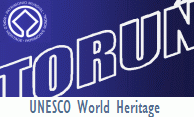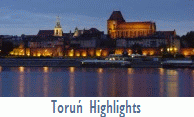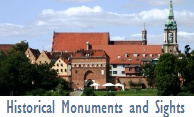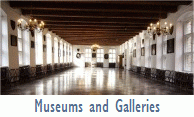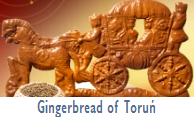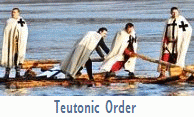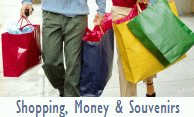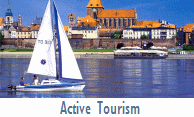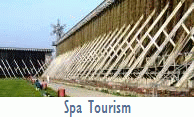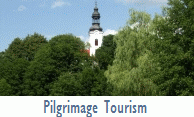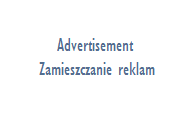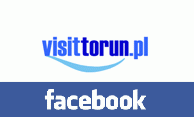|
Museum of Ethnography
Muzeum Etnograficzne Address: Opening hours: - Spring season (15th April - 30th June): Tue & Thu: 9am - 7pm | Wed & Fri: 9am - 4pm | Sat & Sun: 10am - 6pm | Mon: closed - Summer season (1st July - 30th September): Tue & Thu & Sat & Sun: 10am - 6pm | Wed & Fri: 9am - 4pm | Mon: closed - Low season: (1st October - 14th April): Tue - Fri: 9am - 4pm | Sat & Sun: 10am - 4pm | Mon: closed
Admission fees: - 14 PLN, reduced: 9 PLN, family: 25 PLN - Ethographical Park (skansen) only: 9 PLN, reduced: 6 PLN, family: 18 PLN
- Exhibitions in Arsenal building only: 7 PLN, reduced: 4 PLN, family: 14 PLN
Booking guides, entrance tickets, further details: Toruński Serwis Turystyczny (Toruń Tourist Service), tel. (+48) 66 00 61 352, e-mail: muzeum@turystyka.torun.pl  i Museum of Ethnography, and in particular the Ethnographic Park (skansen) with the completely decorated and furnished farmsteads and rural cottages (the oldest of which dates back to 1767) located in the heart of the city, is the primary tourist attraction, which moreover attracts tourists with organized occasional folk events.
Museum of Ethnography in Toruń is one of the three largest and independent ethnographic museums in Poland. It was established in 1958 as a result of becoming independent the ethnography section of the District Museum after the initiative of the foundress - prof. Znamierowska-Pruefferowa. The items gathered since 1946 include the whole of folk culture (customs, rituals, household appliances and farm architecture) of northern Poland and of whole Poland in the matter of fishery. The Museum also has one of the biggest collection of contemporary folk art and rural crafts.
Permanent exhibitions:
 Secrets of everyday life. Folk culture and related border issues from Kuiavia to the Baltic Sea (1850-1950) Secrets of everyday life. Folk culture and related border issues from Kuiavia to the Baltic Sea (1850-1950) The exhibition is a story about people, their everyday life consisting of both work time and holiday time. Many aspects of everyday life from the turn of 19th and 20th centuries seem to be astonishing, unclear and sometimes even exotic. Also, people living in those days found many phenomena from their surrounding mysterious but they interpreted them in compliance with many-hundred-year-old tradition and in accordance with contemporary outlook on life. The exhibition is a “portrait” of ethnographic regions belonging to the area of the Kuiavia-Pomerania Province and covering the area of pre-war Pomerania Province (regions: Kuiavia, the Chełmno Land, the Tuchola Forest, Kociewie, Pałuki, the Dobrzyń Land, Krajna). We present mainly everyday life of farm people living in villages and small towns, in other words – folk culture. However, we want to point distinctly out its borderline character resulting from important influence of noble and middle-class culture and especially from technical and civilization changes. This territory is also an ethnic and religious borderline area. The residents of this area are mainly Poles and Catholics. However, historical and cultural presence of other ethnic and religious groups is also of great significance. These groups are mainly Germans, people with Netherlands origin, Mennonites, Protestants as well as Jews, Gypsies and Russians. We are presenting the most valuable objects from the museum collection in order to illustrate everyday life and to answer basic questions concerning human life in the past: what people ate, how they dressed, how they cared about hygiene, how they worked and spent free time, how they celebrated and what they believed in. The exhibition shows the time at the turn of the 19th and 20th centuries (therefore we use past tense in descriptions), but many of the issues presented have both earlier and later origin, and in some cases, even continuation at present. i The skansen exhibits a wide variety of items of rural architecture mainly dating back to the 18th and 19th centuries. These were transferred here from the following regions of northern Poland: Kuiavia (Kujawy), the Chełmno Land (Ziemia Chełmińska) and the Dobrzyń Land (Ziemia Dobrzyńska), as well as Kociewie, the Tuchola Forests (Bory Tucholskie) and Kashubia (Kaszuby).
Alongside the three complete farmsteads within the Park, there are also single residential buildings, smithies, a fire station, a granary from 1767, a 'hen-house' from the village of Laski dating back to the 1st half of the 19th century, a Kuiavian windmill from 1896, a watermill from the early 20th century and a fisherman's houseboat. The farms and buildings are fit out with items of daily use. There are also clothes, laid tables and likenesses of the saints. The display is augmented by small architectural items like outhouses, cellars, wells, fences, crosses and garden or wayside shrines. All these items help to depict the life and work in rural areas as they were in the 19th and early 20th centuries. At times the equipment can be seen put to use by smiths, potters, millers and wickerworkers.
Selected objects:
 'Hen-cottage' (Polish: kurna chata) 'Hen-cottage' (Polish: kurna chata) The cottage from village Laski, Tuchola Forests, from the 1st half of the 19th century.
A very interesting example of 'kurna chata' cottage, or a building without a chimney. The smoke from open fireplace (on which food was cooked) made its way through air-holes at the apex of the board-covered roof.  Cottage from the village of Skórzenno Cottage from the village of SkórzennoThe exhibition illustrates the living conditions of three-generations family in Kociewie region, mid 19th century. In the grandparents room: horn workbench and painted furniture: chest of 1864, and the sideboard of the 1866. The chamber of a younger generation is equipped with sophisticated equipment dating back the beginning of the 20th century, including vertyko - type of chiffonier.
 Forge from Jastrzębie, the Chełmno Land, early 20th c. Forge from Jastrzębie, the Chełmno Land, early 20th c.The interior of the blacksmith's workshop with fireplace and leather bellows is filled with tools used by a blacksmith in the struggle with the hard iron. These are primarily various types of anvils (including double-cornered dated 1846), hammers, files, tools, drills, measuring tools and a set to shoe a horse.
 Kuiavian farmstead Kuiavian farmsteadFarmstead belonged to the rich Kuiavian farmer. Inside the cottage (turn of the 19th century), in the room acting as a drawing-room, there is furniture made by provincial craftsmen, windows decorated with paper curtains - paper cut-outs.
On the walls oil-prints from the end of the 19th century and religious paintings adorned with garlands of paper flowers. Many family photographs, in one there are jubilee celebrators on the day of “Golden Wedding”, with commemorative canes. Cottage with stable from village Sucha, 1st half of the 19th century
Barn from Mikołajskie, early 18th century Livestock building form Mikołajskie, early 19th Inside of the large arcaded cottage of a wealthy farmer the rich painted chest and dresser from the late 19th century catch the attention. Vestibule, where he stored food products and provisions, is filled with the equipment necessary on the farm - eg. trough, bread kneading, groats mortar, scales, stump and axe, a device for hanging pigs, as well as water yoke, mousetrap, hand magle. The barn from the village Mikołajskie comes from the beginning of the 17th century and is one of the oldest preserved timber construction of farming buildings in northern Poland.  Kashubian farmstead Kashubian farmstead Cottage form village Męcikał, early 19th century
Livestock building from Kłodawa, early 19th century
The exhibition illustrates the living conditions of multi-generation family running about 4 morgas (unit of land measure, 1 morga = 5600 m2) leased from the gbur (Polish for wealthy villager). The source of obtaining food was also fishing and the picking and drying mushrooms, nuts, forest fruits. The oldest woman in the family (grandmother) dealt with the herb-cultivation.
 Windmill from village Wojtówka, Kuiavia, 1896 Windmill from village Wojtówka, Kuiavia, 1896Windmill belonged to several generations of millers named Salomoński. The owners were good carpenters and builders, were buying or self-constructing new facilities, were making many improvements. As a result over 100-year-old windmill still is operating, an excellent state of preservation of original, archaic equipmentis is surprising. And its history is really fascinating...
 Watermill from village Strzygi, the Dobrzyń Land, early 20th century Watermill from village Strzygi, the Dobrzyń Land, early 20th centuryThe mill was located by an unnamed little stream outsider the village. The Museum purchased it in 1990 from the last owner, who run it until the spring of the following year. After the dismantling and transfer to the museum, the building was assembled with reconstruction of some of older facilities according to the documentation of the 1926.
 Free-standing bread oven, Kashubia, late 19th century Free-standing bread oven, Kashubia, late 19th centuryFree-standing bread ovens were built out in a field or orchard. They were often used of by several families or bigger farms. Wealthy Kashubian gburs had them stood in their pens to draw extra incomes. The firing furnace used were pine wood, blocks of peat, sometimes straw. The oven was heating up for about 1 hour. Baking bread lasted from 1.5 to 2 hours, which was dependent on the type of dough and size of loaves. i  Prof. Maria Znamierowska-Pruefferowa Study Room Prof. Maria Znamierowska-Pruefferowa Study Room Prof. Maria Znamierowska-Pruefferowa was the foundress of the Museum of Ethnography in Toruń. She was the director until his retirement in 1972. Contact, cooperation with the Museum remained until her death. She decided to present the museum with "research and all the items needed to arrange a permanent exhibition concerning meeting of cultures", as formulated in person, and what was understood from the beginning as a biographical exhibition dedicated to her. In June 2008, the 110th anniversary of birthday of Professor, permanent exhibition was opened. In the cozy room in the Arsenal building the items from her small, overcrowded flat are collected. We tried to give it a unique mood. The exhibition was equipped with piano, furniture, textiles, paintings, and a lot of things. It also shows the selection of documents relating to education, work and personal life. i
|
| All rights reserved Toruń 2005-2009 | About us | CenterMedia |



